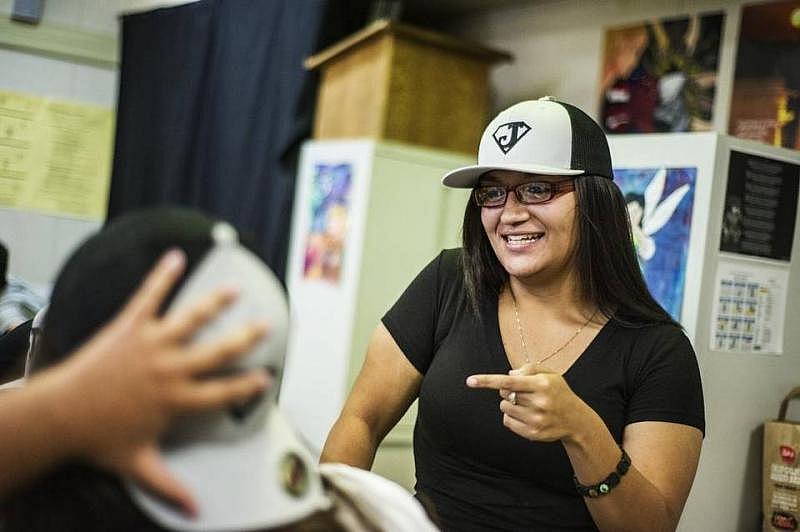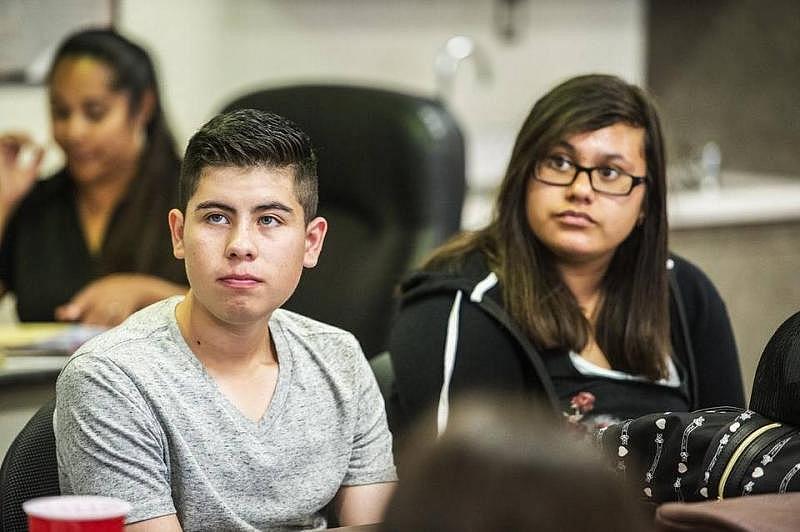Residents in Calif.'s Central Valley work toward safer, healthier neighborhoods
Ana B. Ibarra wrote this story, the third in a three-part series for the Merced Sun-Star, as a fellow of the California Health Journalism Fellowship at USC’s Annenberg School of Journalism. Other stories in the series include:
Violent traumas bear array of often buried health issues
Unspoken emotional damage looms over victims of violence in Merced County

Violence “absolutely” creates unhealthy communities, experts agree.
While that conclusion isn’t exactly breaking news, treating the specific consequences is difficult and solutions can be elusive.
As Merced County struggles with record-high violent crime, more people are starting to question the impact this upward trend is having on the well-being and progress of local communities.
Thirty-two homicides took place last year – that’s about 12.51 slayings per 100,000 people compared with the state average of 4.6 per 100,000 people, according to the latest Merced County coroner’s report.
More than half of the homicide victims in 2014 were between the ages of 15 and 29.
So far in 2015, there have been 19 slayings countywide.
Most people recognize that violence can bring about negative health outcomes for victims and perpetrators, according to Sidra Goldman-Mellor, an epidemiologist and UC Merced public health professor.
That toxicity can also trickle down to those who just happen to witness or hear about violence in their neighborhoods, especially children who are most impressionable, she said.
“Maybe there’s nothing terrible happening in their household; they may be a very loving family, but they live in a neighborhood that is just rife with violence,” Goldman-Mellor said, “... hearing about violence from their parents or friends or seeing other people get assaulted ... that increases their risk for mental health problems as well.”
Being exposed to violence at a young age also has a direct link with “externalizing behaviors,” such as picking fights and being argumentative. “This connection is actually stronger,” she said.
Most of the research available on violence outcomes has been done in larger, urban areas, and tends to focus on children and teens.
Goldman-Mellor is getting ready to start a new research project in which she will use statewide crime and health data to learn how violence and other socioeconomic factors are contributing to poor health.
“Unfortunately, this is the kind of thing that policy makers don’t always love to address because it has such a long timeline for seeing benefits,” she said.
Health issues brought upon by violence also have huge economic costs, she added, both in terms of direct medical costs and in terms of reduced functioning, like losing the ability to work.
“People with mental health problems have a harder time getting employment, harder time remaining stably employed and it affects their family,” she said. “It can turn into this intergenerational transmission and I think that’s something that’s not paid attention to enough in policy circles.”
Restorative justice
The perception students have of their community can affect how they feel about themselves, according to Donna Alley, superintendent at Le Grand Union High School District.
Alley supports restorative justice programs in schools, which teach students ways to resolve conflicts without violence, she said.
Le Grand High School junior Andy Moreno, 16, listens to Restorative Justice League coordinator Andre Griggs, during a meeting at Le Grand High School in Le Grand, Calif., Tuesday, Aug. 25, 2015. The program trains students to offer support to peers who may be facing challenges at school, home or in the streets.
In Le Grand High School’s Restorative Justice League, students are trained to offer support to peers who may be facing challenges at home, at school or in the streets.
They are encouraged to solve problems verbally and speak about the issues they feel are important, Alley explained.
“Students hear things, they know when there’s been a drive-by, for example,” she said. “Kids talk, and (through the restorative justice program) we give them a safe space to do so.”
According to a Health Impact Assessment report released late last year, the restorative-justice discipline approach reduced school suspensions by 20 percent to 40 percent in Merced County.
If adopted countywide, researchers estimate 3,400 fewer students would be suspended – this in a county that reported 8,500 suspensions in the 2012-13 school year.
Restorative practices have been implemented at six high schools in Merced County: Le Grand, Buhach Colony, Golden Valley, Yosemite, Sequoia and Valley Community.
“We have to address the root problem: Why is this child misbehaving?” Alley said. “Most likely their behavior is not going to change when you suspend or expel them from school.”
Ashli Quintela, a junior at Le Grand High, has participated in the program for three years. She said fights still break out at school, but students in trouble now have the option of speaking with a peer who is trained in conflict resolution, like herself.
“The program offers confidentiality, and they (students in trouble) usually feel more comfortable speaking to us than with administration,” she said. “We talk it out. It’s like an outlet for all of us.”
Andre Griggs, the Restorative Justice League coordinator who started the Le Grand program, said the atmosphere on campus has shifted. Most important, he said, he’s seen a boost in confidence in students who participate in the program.
“It’s an evolution process,” Griggs said. “They start believing in themselves. They see their attributes and they realize they are more than the streets.”
Community response
Various community groups have taken a hands-on approach to building safer and healthier neighborhoods. Some groups host community workshops and resource fairs; others walk the streets late at night in a call for peace.
One example is Golden Valley Health Centers, which established the Healthy South Merced Project back in 2008. During their first community summit, residents identified violence as their top concern.
South Merced, an area that gets a bad rep for its violent activity, was the setting of nine of last year’s 32 homicides. In 2013, only two of the county’s 30 homicides took place in south Merced, according to the Merced Police Department. So far, five of this year’s 19 slayings have taken place in south Merced.
Griselda Villa, a community health program manager at Golden Valley Health Centers, explained that when people do not feel safe in their neighborhoods they won’t be able to make lifestyle choices that can help improve their health, such as going outside to exercise, sending their children out to play and visiting local parks.
The clinic group facilitates “Community Conversation” forums with residents and law enforcement as a way to build relationships and trust, she explained. In May, GVHC hosted three gang awareness workshops, in which Merced police officers educated parents on the signs children may show if they’re becoming involved in gang activity.
Villa and organizers from other local nonprofits and programs have all expressed a similar thought: Reducing violence in the community cannot be accomplished by one sector. It takes everyone – law enforcement, schools, health care providers, parents and the public; an integration of all resources.
“Collaboration is key,” Villa said. “That’s the only way I think we’ll see a difference.”
[Photographs by Andrew Kuhn.]

